
SAS' Leonid Batkhan reveals coding techniques that give you control of when and whether global statements are executed.

SAS' Leonid Batkhan reveals coding techniques that give you control of when and whether global statements are executed.
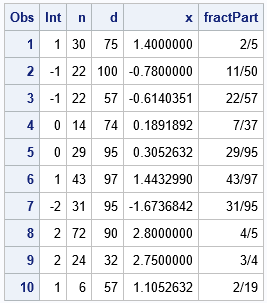
I have previously shown how you can use the FRACTw. format in SAS to display numbers as fractions. But did you know that you can also use the format to obtain the numerator and denominator of the fraction as numbers in a program? All you need to do is to

The people, the energy, the quality of the content, the demos, the networking opportunities…whew, all of these things combine to make SAS Global Forum great every year. And that is no exception this year. Preparations are in full swing for an unforgettable conference. I hope you’ve seen the notifications that

A previous article describes how to use the SGPANEL procedure to visualize subgroups of data. It focuses on using headers to display information about each graph. In the example, the data are time series for the price of several stocks, and the headers include information about whether the stock price

One of the first things I learned in SAS was how to use PROC PRINT to display parts of a data set. I usually do not need to see all the data, so my favorite way to use PROC PRINT is to use the OBS= data set option to display
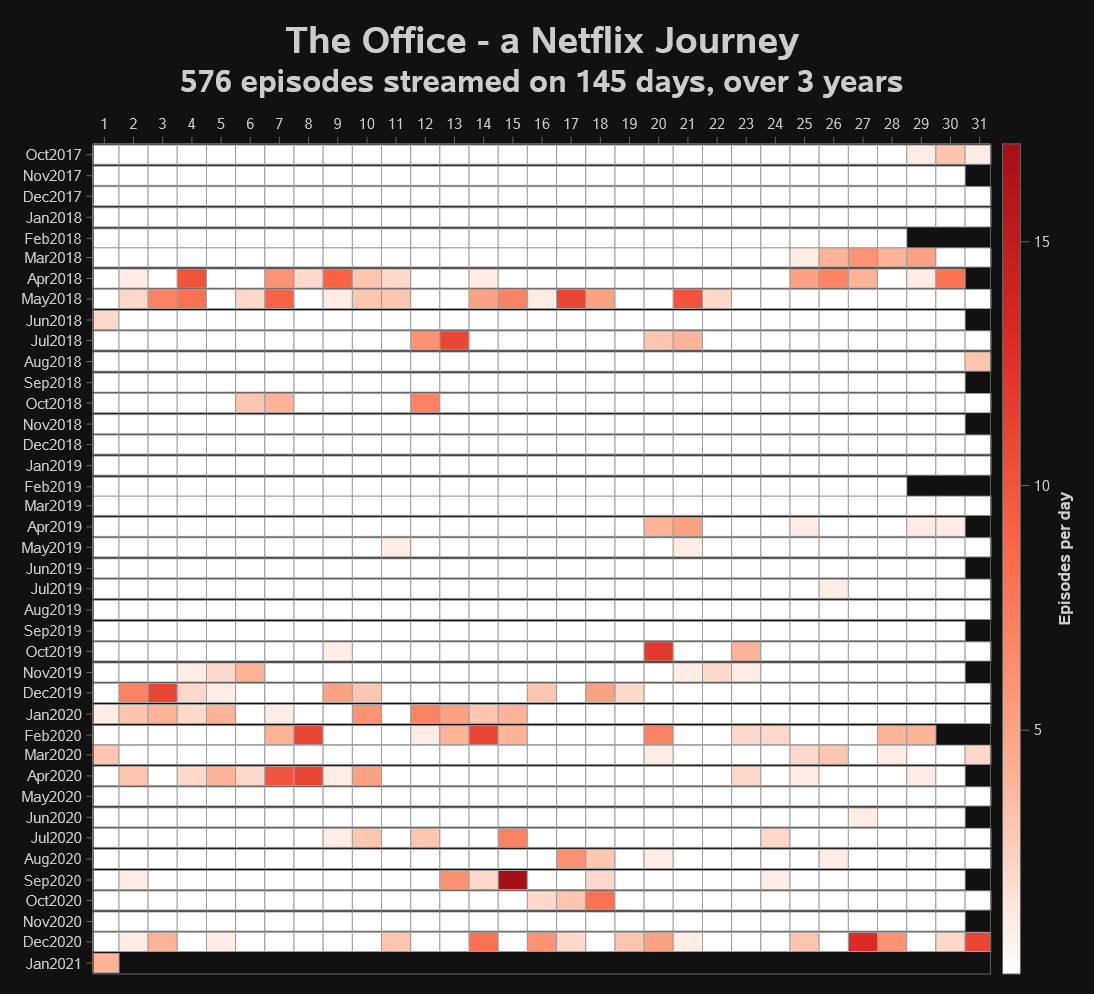
Over 57 billion minutes of The Office was streamed in 2020. My family bears some responsibility. Here's our activity visualized -- using SAS.
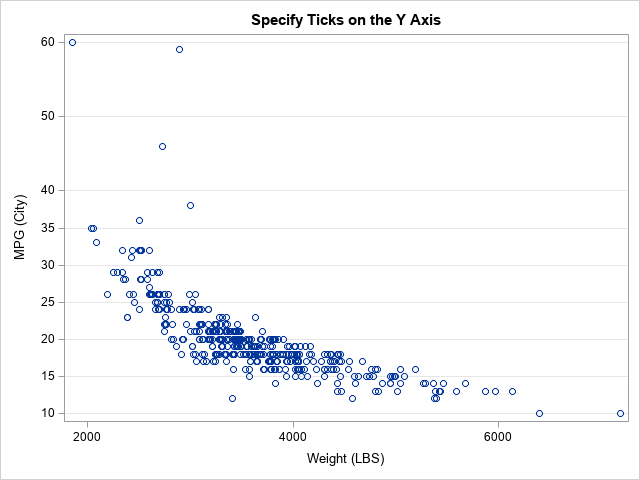
Have you ever heard of the DOLIST syntax? You might know the syntax even if you are not familiar with the name. The DOLIST syntax is a way to specify a list of numerical values to an option in a SAS procedure. Applications include: Specify the end points for bins

Find out the most popular SAS Users YouTube channel how to tutorials, and learn a thing or two!

If you’re like me and the rest of the conference team, you’ve probably attended more virtual events this year than you ever thought possible. You can see the general evolution of virtual events by watching the early ones from April or May and compare them to the recent ones. We
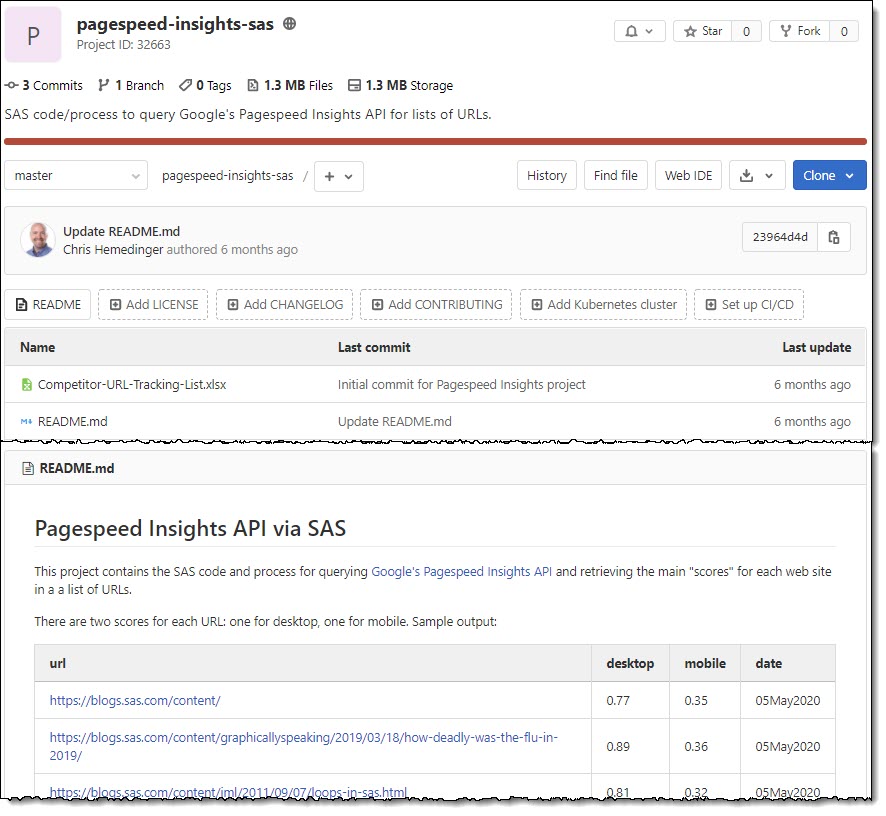
As you begin managing your SAS code and projects in Git, here are a few guidelines for how to organize your work and collaborate with others.
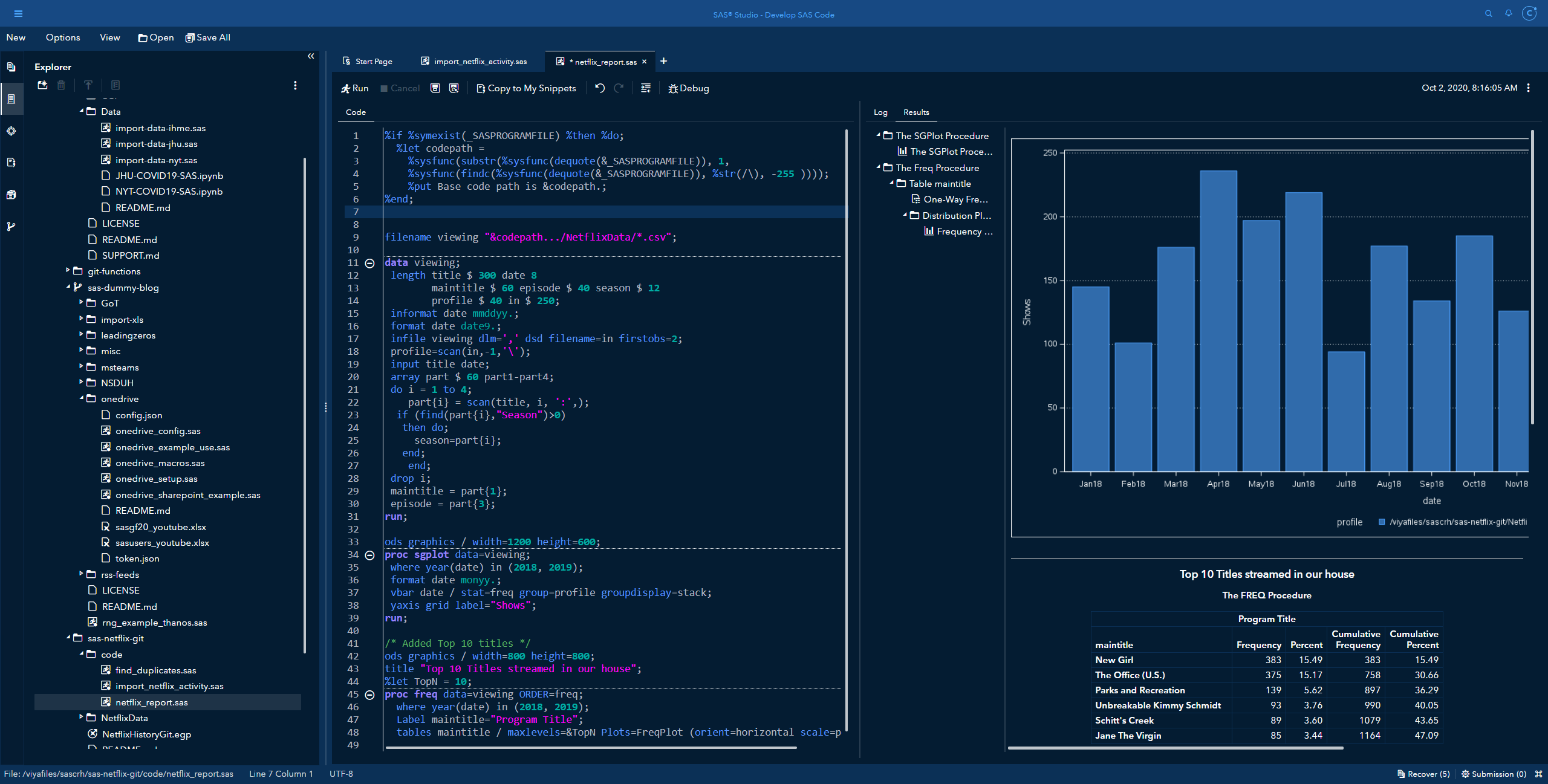
If you're a SAS Enterprise Guide user who is looking to move to SAS Studio, there is a lot to like about your new coding environment.

When there are two equivalent ways to do something, I advocate choosing the one that is simpler and more efficient. Sometimes, I encounter a SAS program that simulates random numbers in a way that is neither simple nor efficient. This article demonstrates two improvements that you can make to your

Finite-precision computations can be tricky. You might know, mathematically, that a certain result must be non-negative or must be within a certain interval. However, when you actually compute that result on a computer that uses finite-precision, you might observe that the value is slightly negative or slightly outside of the

Many textbooks and research papers present formulas that involve recurrence relations. Familiar examples include: The factorial function: Set Fact(0)=1 and define Fact(n) = n*Fact(n-1) for n > 0. The Fibonacci numbers: Set Fib(0)=1 and Fib(1)=1 and define Fib(n) = Fib(n-1) + Fib(n-2) for n > 1. The binomial coefficients (combinations

SAS' Leonid Batkhan reviews SAS functionality related to the character strings quoting/unquoting, then dives deep into unquoting SAS character variables.
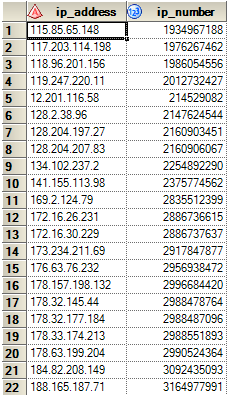
As citizens of the Internet, we are all familiar with IP addresses -- probably more so than our Internet founding fathers had ever intended. These addresses are typically represented in a 4-piece segmented list of numbers separated by dots. Here is an example: "149.173.5.120". Each segment is called an octet

SAS offering free learning resources in celebration of programmers For more than 40 years, SAS programmers have crafted software and solutions that transform the world. From statistics to data science, to analytics and artificial intelligence, people writing code have architected a new economy with incredible opportunities. SAS Programmer Week honors
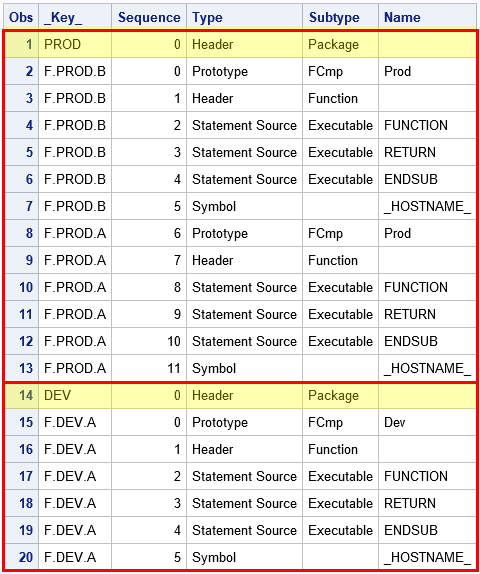
I got a lot of feedback about my recent article about how to find roots of nonlinear functions by using the SOLVE function in PROC FCMP. A colleague asked how the FCMP procedure stores the functions. Specifically, why the OUTLIB= option on the PROC FCMP statement use a three-level syntax:
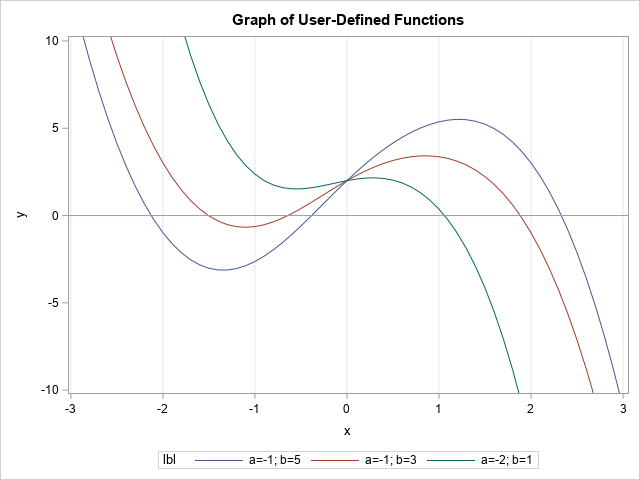
Finding the root (or zero) of a nonlinear function is an important computational task. In the case of a one-variable function, you can use the SOLVE function in PROC FCMP to find roots of nonlinear functions in the DATA step. This article shows how to use the SOLVE function to

SAS' Leonid Batkhan reveals how to change lengths for all character variables in a data set and all data sets in a data library to facilitate data migration to Unicode encoding environment.
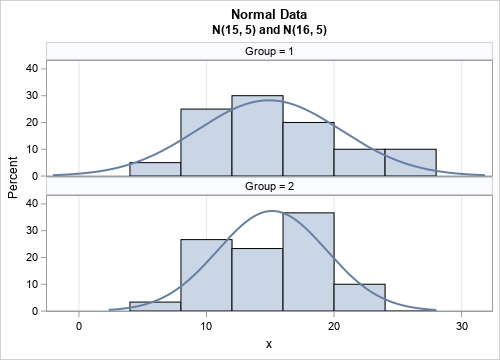
A common operation in statistical data analysis is to center and scale a numerical variable. This operation is conceptually easy: you subtract the mean of the variable and divide by the variable's standard deviation. Recently, I wanted to perform a slight variation of the usual standardization: Perform a different standardization

SAS' Leonid Batkhan shows you how to split a large data set into many by a subsetting by a number of observations to produce smaller, better manageable data sets.

Is there programmatic way to reduce memory requirements of a CAS table in SAS® Viya®? Yes! SAS' Steven Sober shows you how.

A lookup table is a programming technique where one or more values can be used to retrieve another value. For example, many years ago, I had benzene exposure estimates for 10 years (1940 to 1949) for each of five locations in a factory. Given a year and a job location,

Preparing for the SAS Certified Base Programmer exam? SAS' Mark Stevens reveals the best ways to prepare.

As many of us are learning to navigate the changing world we are living in amid the COVID-19 outbreak, and as we care for our loved ones, friends, and our community, many of us now find ourselves working and studying from home much more than we did before. As an
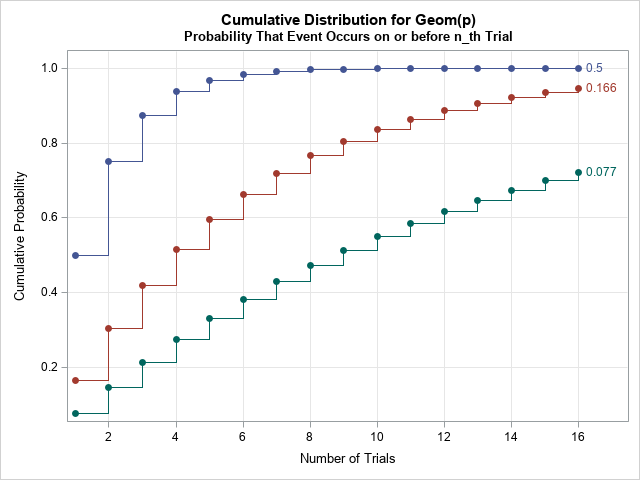
I have written several articles about how to work with continuous probability distributions in SAS. I always emphasize that it is important to be able to compute the four essential functions for working with a statistical distribution. Namely, you need to know how to generate random values, how to compute
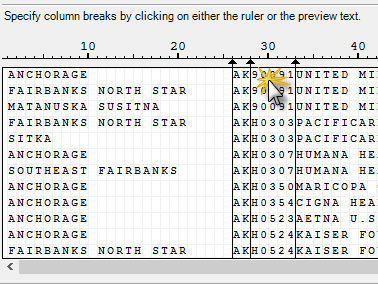
I'm a big fan of the Import Data task in SAS Enterprise Guide, especially for its support of text-based files (CSV, tab delimited, fixed width, and more). There's no faster method for generating SAS code that reads your data exactly the way you need it. I use the tool so

At SAS Press, we agree with the saying “The best things in life are free.” And one of the best things in life is knowledge. That’s why we offer free e-books to help you learn SAS or improve your skills. In this blog post, we will introduce you to one
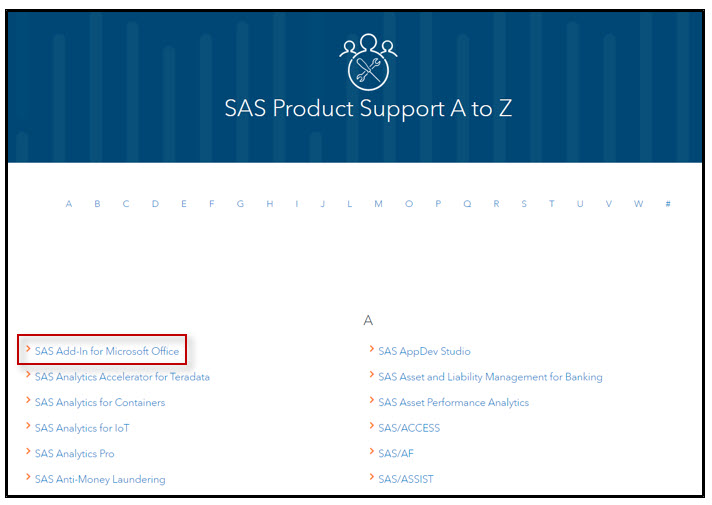
Let’s be honest, there is a lot of SAS content available on the web. Sometimes it gets difficult to navigate through everything to find what you need, especially if you are looking for complimentary resources. Training budgets can be limited or already used for the year, but you’re still interested